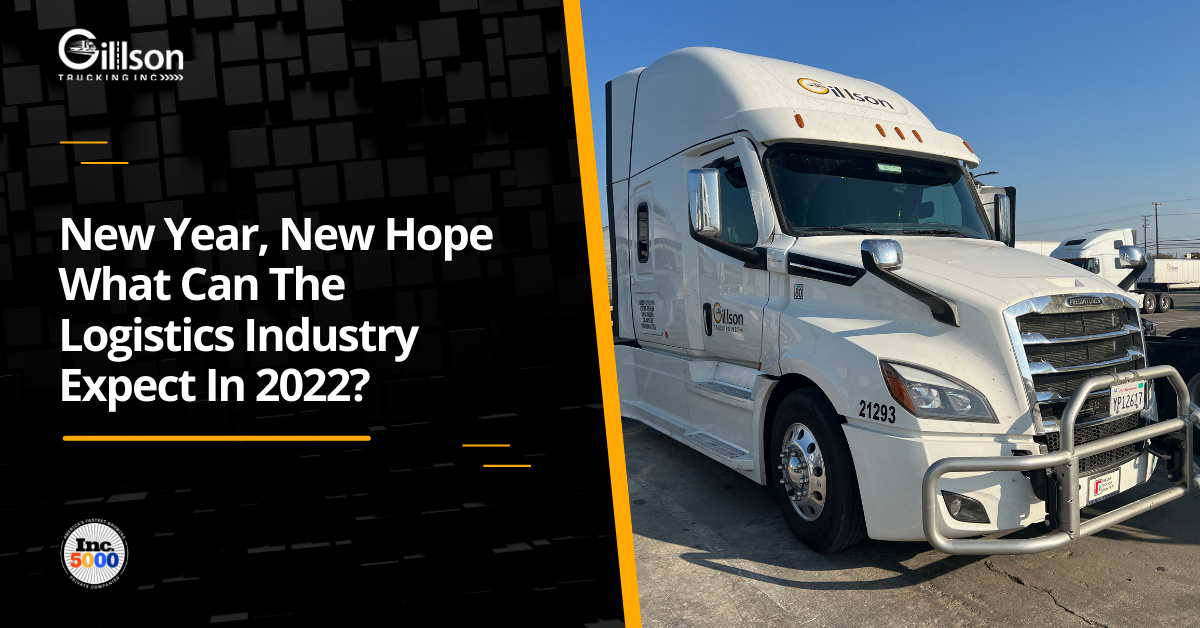The last couple of years has been a time of metamorphosis for the global supply chain and logistics industry. The COVID-19 pandemic served to exacerbate the problems already plaguing the logistics industry, as well as create new ones. We’ve seen everything from worsening driver shortages; leading levels of demand in capacity with a drastically reduced ability to respond; an unprecedented container shortage, and port congestion that has led to a record-breaking number of ships waiting to dock to unload.
To add insult to injury, the valuation of the logistics industry has plummeted to $5,200 billion in 2020, from $7,641.2 billion back in 2017, with the pandemic being the root cause of the slowdown in the global supply chain and logistics network. On the positive side, the logistics industry is expected to make an upswing by 2027, upwards of $12,975.64 billion, owing largely to the e-commerce, pharmaceuticals, and day-to-day needs of consumers. All of this, however, begs the question “What’s next?”
In the coming year we can expect several trends and disruptions both new and old to dominate the logistics industry. Here’s the Good, the Bad, and the Ugly we can expect in 2022
The Bad: Expect the driver shortage to continue
The truck driver shortage has made many a front page throughout 2020-21. Unfortunately, in 2022, the trucking industry isn’t likely to see this change as many drivers are approaching retirement age, and fewer candidates are willing to take up the wheel.
There are many factors that aren’t helping the situation. Of course there’s the occupational hazards and health risks to contend with. But the life of a truck driver is not a glamorous one. Uncertainty in hours, especially for long haul drivers, is already a deterrent, combined with unfavorable conditions drivers often have to deal with makes it less likely that younger generations will want to take up the occupation.
While there are various pieces of legislation aimed at correcting the driver shortage such as the Worker Classification Act and the AB5 Independent Contractor Law in California, it is unlikely that the shortage of truck drivers in the United States will be corrected anytime soon, let alone 2022.
The Ugly: Port congestion creates more uncertainties
Supply chain snarls have created shortages across the country that have been felt in every industry. These shortages are caused, in large, by the growing port congestion issue. Unfortunately, the two most heavily trafficked ports on the US West Coast simply lack the necessary infrastructure to accommodate the unprecedented traffic they’re now experiencing. As the ports are lacking in equipment, space, and personnel to unload containers, the backlog of ships continues to build up, as do the containers waiting to be exported from the US, which is contributing to the global shipping container shortage.
Due to the container shortage, the Shanghai Containerized Freight Index hit a new high during the last week of December, at 76% year-on-year, topping 5,000 points. With 101 ships waiting to berth and unload at the Los Angeles/ Long Beach ports, container prices have increased once again.
Asia-US contract rates have risen by 12% from 2020 (pre-COVID), according to the latest data from a survey by Xeneta. Bids for 2022 are already in negotiation, with an average of $5,700 per 40’ container unit. These astronomical prices are likely to only increase, a trend we saw emerge during the height of the pandemic.
While COVID-19 simmers on the back burner, the current port congestion situation is tenuous at best. However, one mutation could be all it takes to see this situation go from ugly to worse.
The Good: The evolution of the Logistics Industry
Fortunately, it’s not all bad news. Far from it, in fact. To paraphrase Plato, “Necessity is the Mother of invention” and there has never been a greater need within the global supply chain.
For starters, we can expect to see a diversification with freight transportation. Currently, 80 percent of all global freight is transported via ocean carriers. However, with China’s zero COVID policy where a single COVID case will put an entire area in lock-down, shippers have a much greater need to diversify their transportation methods. Amazon, for instance, is building its own air freight division as well as increasing their use of intermodal transportation methods.
Another trend we can expect to see during 2022 is micro-warehousing and last-mile logistics development becoming prioritized. Warehousing space is currently going for beyond a premium, to the point of becoming cost prohibitive. Micro-warehouse are focused on keeping inventory closer to urban distribution areas, which will cut down on the overall transportation needs of the shipper.
With e-commerce demand continuing to rise, the need for delivery and parcel services like UPS and FedEx are also on an upswing. Micro warehousing and last-mile logistics will thus be focus areas for many corporations and shippers in 2022, hoping to boost both revenue and fulfillment capabilities.
Lastly, we can expect to see a rise in the utilization of third-party logistics, 3PLs. With more and more small to medium businesses pivoting to e-commerce channels in lieu of brick-and-mortar shops, there is a need for better transparency and visibility within their supply chains.
According to an Allied Market Research report, the global 3PL market is projected to reach $1.1 trillion by 2027. Equipped with technological innovations and digital tools, 3PLs provide support, visibility, and intelligence on various logistics operations.
Looking to the Future for the Logistics Industry
If 2020 has taught us anything it’s that our industries, as a whole, need to be adaptable and flexible. As the logistics industry remains the backbone of the global supply chain and global trade as a whole, the industry must overcome any obstacles quickly in order to remain in motion.
This means that companies will need to focus on digitizing their operations to make their logistics smoother and more efficient. Fortunately, as the industry evolves, so does technology. Utilizing new technology can make the difference between success and failure for any organization especially as the future remains uncertain, even at the best of times.
If you are hoping for a trucking solution that marries technology and experience in fulfillment, you want to look at Team Gillson. One of Inc 5000’s list of fastest-growing companies in North America, TeamGillson, can help you with all your trucking logistics requirements.
Contact Gillson now to learn more about their services or to get a quote.


